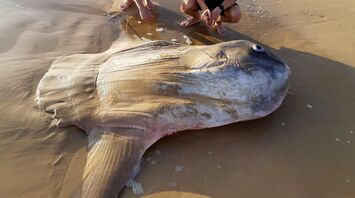These Species Can Give Birth to a Record Number of Babies in One Go

When considering which animal species can produce the most offspring at one time, it's evident that different reproductive strategies play a significant role. Various factors such as lifespan, whether the young are born live or hatched, and the animal's ecological conditions all contribute to these strategies. This is prepared by SSP.
Dr. Kathleen Cole, an ichthyologist from the University of Hawaii, explained that animals can differ vastly in terms of gamete production, with fish typically outproducing others due to the lower energy required to release unfertilized eggs. An example is the ocean sunfish (Mola mola), known to carry up to 300 million eggs. However, these eggs are fertilized externally, meaning many may never become viable offspring.

On the other hand, insects like the African driver ants (Dorylus wilverthi) can produce massive numbers of fertilized eggs, laying up to 3-4 million in a single month. Social structures in these species allow for higher survival rates of the eggs.
Among birds, species like the gray partridge (Perdix perdix) can lay around 22 eggs per clutch, showcasing another higher end of egg production. Yet, for live births, seahorses serve as an interesting example where fathers, rather than mothers, carry up to 2,000 live young in their pouches until birth. The puff adder (Bitis arietans) holds a record among terrestrial live bearers, giving birth to up to 156 offspring from one pregnancy.
Certain animals surprise with fewer offspring per birth. For example, coyotes have litters averaging 19 pups, and emus can lay about 15 large, deep green-hued eggs. This pattern varies significantly based on many adaptive behaviors and environmental contexts.
Live births generally mean fewer offspring due to greater individual care and resource allocation. Species like elephants and whales, often having just one baby at a time, evolve differently compared to short-lived animals that produce large offspring numbers quickly due to rougher life expectancy projections.
Group living examples, like driver ants, benefit from collective protection allowing higher offspring counts, defying solitary trends seen in other species like mice and rabbits, the latter having about five offspring per litter despite their classification as live bearers.
In summary, while certain trends persist due to evolutionary pressures and reproductive structures, exceptions – driven by abrupt ecological and environmental changes – continually introduce unique reproductive actors to the animal kingdom.



















